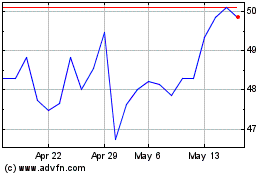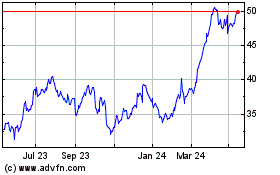Renault Group: “À la Dacia”: a unique business model which drives high margins and returns
18 June 2024 - 2:00AM

Renault Group: “À la Dacia”: a unique business model which drives
high margins and returns
|
Press ReleaseJune 17, 2024 |
| |
| |
“À la Dacia”: a unique business
modelwhich drives high margins
and returns
Boulogne-Billancourt, June 17, 2024
Renault Group organizes an analyst &
investor field trip in Romania dedicated to Dacia
on June 17th and 18th, the opportunity for Luca de Meo, CEO of
Renault Group, and the Dacia management team led by Denis Le Vot,
CEO of Dacia, to present the uniqueness of Dacia’s business model
and how the brand is now expanding while continuing to further
increase its profitability.
A unique business model
Dacia’s model is unique, built upon the
combination of three main components:
-
A design-to-cost as a way of life, which aims c.
-15% of cost advantage vs. competition thanks to a focus on what
really matters for the customers (the “essentials”), Renault Group
assets leverage, and 3,000 engineers’ know-how.
-
A unique industrial and sourcing footprint with a
benchmark cost competitiveness supported by high plant utilization
rates (>130% - Harbour) and high local integration rate.
-
A very effective distribution model with
distribution costs c.50% below Western European average, almost no
discount and 30% of sales coming from digital initiatives.
A success story boosted by a new brand identity:
from low-cost to best value-for-money
In a changing environment marked by inflationary
pressures and increasing regulation, vehicles have become more
expensive. Dacia provides a clear answer to customers aspiring for
affordable cars with the right content thanks to its complementary
line-up and trim versions such as Extreme or Journey.
Thanks to its new brand identity that reflects
its values of simplicity, authenticity, and robustness, always at a
fair price, Dacia has become in addition a compelling brand in
Europe with an attractive line-up.
Dacia is clearly a conquest brand for the Group
with 76% of its customers coming from outside. Loyalty is at the
heart of Dacia’s business model since 68% of previous Dacia owners
have bought a Dacia as their new car; 81% have chosen a Renault
Group car.
Thanks to its simple range of vehicles with a
best‑in‑class price point, Dacia benefit from an 80-85% retail
channel mix which results in a no or low rebates approach and leads
to high residual values (+10 pts on average vs. market) alongside a
remarkable dealer satisfaction.
Mid-2024, Dacia is on track to confirm for the
4th year in a row its position on the retail sales podium in Europe
as its best value-for-money proposition attracts more and more
customers in a global inflationist environment.
The success of Dacia is the one of its vehicles.
As of April 2024 YTD in Europe:
-
Sandero is the #1 vehicle sold (and market leader
for retail vehicle sales since 2017);
-
Duster is ranked 1st in retail SUVs sales;
-
Jogger is on the podium of C-segment retail sales
and the best-selling vehicle in the C-segment retail sales,
excluding SUVs;
-
Spring is the 4th best-selling EV to retail in the
A+B segments.
Dacia’s unique design-to-cost approach,
ecosystem, and economic efficiency
Dacia’s approach is to reverse the logic: from
the standard product development way in which cost is the outcome,
to Design-to-cost in which cost is the input.
Standard platform & upper body reuse is the
key to drive capex & manpower efficiency while lowering the
entry ticket and variable costs through scale effect. As such,
Dacia will keep reducing its costs and will benefit from the
doubling of the volume of the global standard CMF-B platform across
brands which will reach 2 million units by 2030. In the meantime,
Dacia will maintain R&D capex expenses below Renault Group’s
average thank to high carry-over rates between the vehicles, from
minimum 40% to 80%.
Dacia’s returns and efficiency are also driven
by:
-
high utilization rate of the industrial footprint (>130% -
Harbour) in which a new car is produced every 30 seconds;
-
ultra-competitive ecosystems in Romania, Morocco and Türkiye with
strong local integration within its supplier base.
Affordable doesn’t mean small: a strong product
plan to ensure future growth
Dacia, currently a B-segment champion, will
boldly enter the C-segment thanks to a carefully crafted product
line-up strategy. After Jogger, Dacia Bigster will embody this move
from 2025 and 2 other vehicles will follow, that will allow Dacia
to double its profit pool coverage. As a result, it expects to
reach ~1 million sales in 2030 of which ~1/3rd in C-segment
mix.
From affordable ICE electrified solutions, Dacia
will smoothly transition to EV in Europe by pioneering affordable
EV solutions. It will do it “à la Dacia” to provide the right
products to its customers and to leverage Renault Group’s and
Ampere’s technology bricks. This approach will support Dacia in
driving down its carbon footprint by 50% by 2035.
In the meantime, Dacia confirms it will play a
role of safety net for Renault Group in terms of speed of
electrification and provides a solid foundation for a profitable
ICE offer. Dacia will contribute to reinvent the ICE value chain
through the cooperation with HORSE Powertrain by developing
breakthrough powertrains adaptation for alternative fuels.
Higher and higher margins and returns
Dacia’s business model and product approach will
ensure a strong growth together with a solid profitability which
drives remarkable returns:
-
Dacia expects its revenue to double between 2022 and
2030, driven half by volume and half by mix and price
while fixed costs are expected to increase slightly over the same
period.
-
Dacia already generates a solid double-digit operating
margin and will reach 15% before 2030.
-
Focusing on returns, Dacia expects to confirm its “ROCE champion”
profile with a ROCE superior to Renault Group’s
(Group’s target >30% from 2025 onwards) and expected to
be multiplied by 2 between 2022 and 2030.
About Renault Group
Renault Group is at the forefront of a mobility
that is reinventing itself. Strengthened by its alliance with
Nissan and Mitsubishi Motors, and its unique expertise in
electrification, Renault Group comprises 4 complementary brands -
Renault, Dacia, Alpine and Mobilize - offering sustainable and
innovative mobility solutions to its customers. Established in more
than 130 countries, the Group has sold 2.235 million vehicles in
2023. It employs more than 105,000 people who embody its Purpose
every day, so that mobility brings people closer. Ready to pursue
challenges both on the road and in competition, Renault Group is
committed to an ambitious transformation that will generate value.
This is centred on the development of new technologies and
services, and a new range of even more competitive, balanced, and
electrified vehicles. In line with environmental challenges, the
Group’s ambition is to achieve carbon neutrality in Europe by
2040.https://www.renaultgroup.com/en/
| RENAULT
GROUP INVESTORRELATIONS |
|
Philippine de
Schonen+33 6 13 45 68 39philippine.de-schonen@renault.com
|
|
|
|
DACIAPRESS
RELATIONS |
|
Xiaoyan Hua-Schwab
+33 6 38 64 62 52 xiaoyan.hua-schwab@dacia.com |
|
|
- 20240617_Renault Group_Press Release_Dacia Days
Renault (EU:RNO)
Historical Stock Chart
From Jan 2025 to Feb 2025

Renault (EU:RNO)
Historical Stock Chart
From Feb 2024 to Feb 2025
